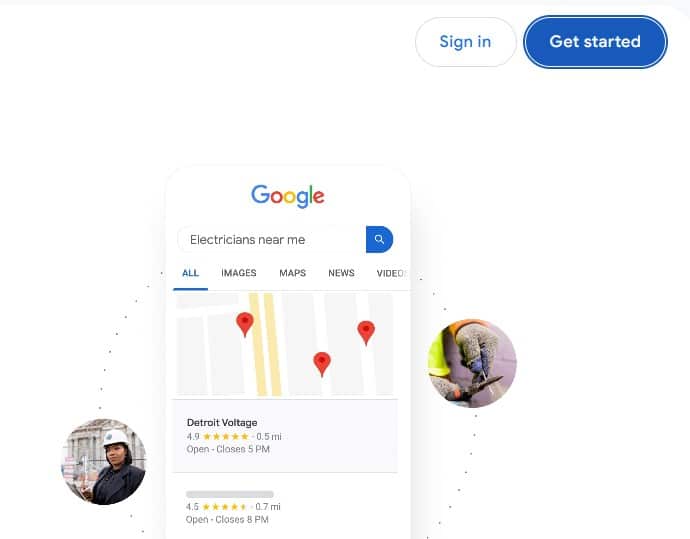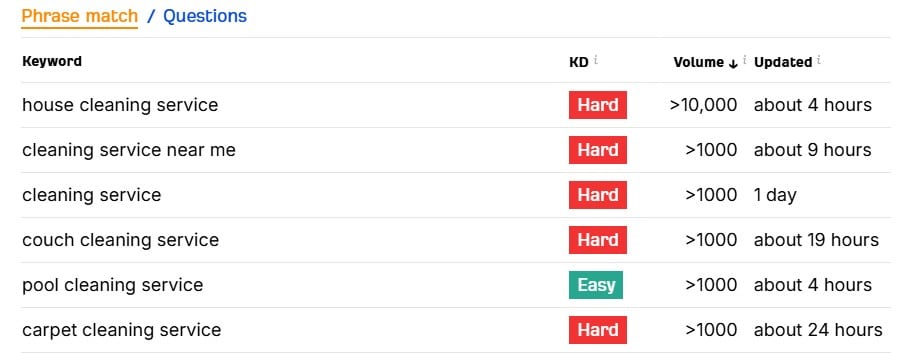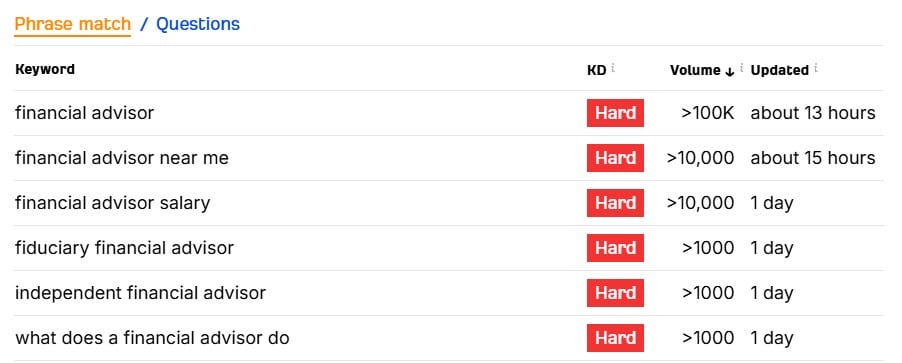If you were wondering how to get more clients for your small business or how to find new customers and increase sales when nothing seems to be working, you’re not alone.
Many small businesses struggle to get new clients and customers for various reasons.
Above all, most new businesses fail to recognize that proactive marketing is just as important as their product or service. They consider marketing as an extra cost. But this makes it difficult for them to acquire new clients.
I’ve collaborated with hundreds of businesses as an SEO expert, or at least we have discussed their marketing strategies on discovery calls.
I’ve noticed a common trend—most small businesses rely on referrals or outdated marketing strategies.
And even those who adopt advanced marketing techniques either try to handle everything themselves or don’t implement them consistently enough.
This significantly limits their success.
That’s why I decided to offer a free guide for small businesses to help them understand the full range of marketing opportunities available. By leveraging these strategies effectively, they can scale and grow into thriving larger companies.
In this guide, we’ll break down how a smarter, more intentional marketing strategy can bring them more loyal clients.
Leverage Local Marketing for Immediate Clients
As most of the small businesses deal with local clients that’s why every business should start with local marketing.
There are some digital and traditional best practices that successful businesses leverage to achieve their client acquisition goals.
Here are some of them that we and 100s of other small businesses use and always get results.
A. Setting Up and Optimizing Google Business Profile (GBF)
83% of consumers use Google to find information about local businesses. And 88% of people who research a local business on their smartphone visit a relevant store within a week.
It means that if your business is not on Google or is not appearing on the first page of Google, you’re missing a huge client acquisition source.
The easiest way to make your business appear on Google is by setting up and optimizing your Google Business Profile (formerly GMB).
Here is how to do it:
1. Set Up Your Google Business Profile

- Visit Google Business Profile and click “Get Started”.
- It will take you to another page.
- Enter your business name, category, and contact details.
- Add your location (or service areas if you’re working remotely as a consultant).
- Verify your business via postcard, phone, or email.
In this way, you have successfully added your business to Google, and it can now appear for different queries people search on Google related to your business.
The next step is to optimize your profile so that it appears on the first page of Google or a local pack, as users click on the results they see on the first page.
2. Optimize Your Google Business Profile
This is an excellent guide to help you optimize your Google Business Profile. Here’s a concise checklist to help you optimize your profile.
- Complete All Business Information – Hours, services, and description.
- Upload High-Quality Photos – Logo, location, team, and products.
- Encourage & Respond to Reviews – Boost credibility and engagement.
- Post Updates & Promotions – Use Google Posts to attract customers.
- Enable Messaging & FAQs – Improve customer communication.
- Monitor Insights – Track searches, views, and customer actions.
It might not get you results quickly, but if you will keep doing this, especially if you will encourage your customers to leave reviews, your profile rankings will improve and you will start appearing on the first page in the following months.
B. Utilize Referrals and Local Networking
In the beginning, the best way to get new clients is by using a referral strategy. If you’re good at what you do—and you should be great at your business—your existing clients will start recommending you.
Research published in Harvard Business Review found that these customers refer 30–57% more new customers, creating a compounding, self-sustaining effect on your referral ecosystem.
The problem is that this process can be quite slow.
That’s why you should offer incentives to encourage clients to actively recommend your business. At least, in the IT industry, it can offer up to 272:1 ROI.
For instance, you can offer them a percentage of the revenue generated from their referrals—this is a common practice among many companies and e-stores.
Even simply asking your clients to recommend your business works, as it doesn’t cost them anything.
Another effective strategy is local networking.
It’s a powerful way to generate business.
For example, if you’re an event planner, you can partner with an interior designer or a bakery. You could organize large events at their location, and in return, you can use their food items or services at your events.
Similarly, every business has local opportunities.
- A small-batch cannery can collaborate with retail stores, farmers’ markets, and specialty grocery shops to stock products.
- Contractors (Roofing) can work with real estate agents, home inspectors, and insurance companies for client referrals.
- IT/Cybersecurity Companies can offer security services to local law firms, medical offices, and small businesses needing data protection.
- Manufacturing Businesses (D2C) can sell through local farmers’ markets, craft fairs, and boutique stores. And also partner with logistics companies for streamlined delivery.
C. Door-to-Door & Direct Marketing
Successful business owners understand that success requires continuous effort at every step. It’s an ongoing process. The truth is, you have to explore every opportunity to achieve success.
In the early days of your small business, this effort is even more hands-on.
Once you start offering your products and services, you need to identify potential customers and actively inform them about your business.
In fact, every marketing strategy—whether organic, paid, or direct—serves the same purpose: spreading awareness about your business.
With door-to-door or direct marketing, you personally introduce people to your business. You can distribute flyers and business cards in the surrounding area and even ask for their business directly.
For example, if you run a domestic cleaning business, promoting your services face-to-face allows you to ask potential customers if they need cleaning services immediately. A skilled salesperson can start generating orders right away.
Similarly, if your target clients are professionals and business owners, you can reach out to them with special offers they can’t resist.
According to the latest U.S. Bureau of Labor Statistics data, states with the highest number of door-to-door sales workers are California, Florida, Texas, Missouri, and Wisconsin. If you’re in one of these states, you’re more likely to find and hire experienced door-to-door sales talent easily.
D. Local Sponsorships & Community Involvement
Another effective strategy that small businesses can actively leverage is community engagement. It helps establish trust, credibility, and long-term customer relationships while setting you apart from competitors and creating meaningful brand awareness.
One way to do this is through local sponsorships. Identify where your potential clients are and start sponsoring events and programs in those areas.
Here are a few examples:
- Pest Control Companies can sponsor local gardening clubs, offer free pest prevention workshops, or provide discounted services for community centers.
- Software Development Agencies can sponsor coding boot camps, offer free workshops for young programmers, or collaborate with schools on tech education programs.
- Local Cafés & Restaurants can sponsor school sports teams, charity events, or food festivals to increase brand visibility and attract local customers.
Another great strategy is offering free services to local charities. This goodwill gesture not only helps those in need but also strengthens your business’s reputation. Word-of-mouth spreads quickly when people see a company giving back, which is why almost all successful businesses invest in their communities.
SEO & Website Optimization for Long-Term Growth
Surprisingly, more than one-third of American small businesses don’t have a website, and this percentage is even higher globally.
This gap gives competitors a huge opportunity to capture a larger share of the market.
For instance, according to the Soci Consumer Behavior Index, 80% of US consumers search online for local businesses on a weekly basis, and 32% search for them daily.
There is a well-known principle in sales and customer relations: people buy from those they “know, like, and trust.”
This means that if your business isn’t online or has a weak online presence, you’re not building your brand or positioning yourself to attract 80% of your potential customers.
Other than listing your business on Google Business Profile, the next step you can’t overlook is creating a business website (if you don’t already have one) and optimizing it for search engines like Google and Bing, or answer engines like ChatGPT.
A. Building a Website That Converts
To get a website for your small business, you should hire specialists who not only understand design but also focus on conversion optimization and the importance of mobile-friendliness in today’s digital world.
Your website is your digital business card. If it’s not optimized for conversions and doesn’t effectively reach your potential clients, you’re missing out on a huge digital market opportunity.
According to research, a well-designed, fast, and mobile-friendly site can significantly boost visibility, engagement, and sales.
For instance, a study by Google found that as page load time increases from 1 second to 3 seconds, the probability of a visitor bouncing increases by 32%. If it goes up to 5 seconds, the bounce probability jumps to 90%.
Additionally, Akamai reports that a 100-millisecond delay in website load time can reduce conversion rates by 7%, while a 2-second delay can increase bounce rates by 103%.
This means that every second your website loads faster can have a huge impact on conversions, improving both user experience and revenue potential.
B. Optimizing website for search engines (SEO)
According to research, 98% of buyers research online before making a decision. SEO lets you position your business exactly where they’re looking, right at the moment they’re ready to buy.
People often conduct their research using search engines like Google and Bing or AI tools like ChatGPT. Once you have a website, you can optimize it to attract these potential clients through search engines and answer engines.
The process begins with keyword research aligned with your business goals, followed by optimizing your website for those keywords.
For example, if you run a cleaning business, you can use Ahrefs’ free keyword research tool to determine how many people search for your services each month.

You’ll likely find thousands of potential customers actively looking for cleaning services.
The same applies to almost any business—thousands of people search for services and products in every industry.
For instance, thousands of people in the USA search for financial advisors every month.

Once you’ve identified the right keywords, you can optimize your website to rank for them, ensuring that your business appears when potential clients are searching for solutions you provide.
Here’s another example: As an SEO expert, I targeted the keyword “BPO clients” for brand awareness.
Now, my website ranks on Google and other search engines for related search terms.

Occasionally, when businesses need reliable SEO services, they find my content and reach out to me directly.
This is called inbound lead generation, where potential clients come to you when they need your product or service.
The best part of SEO is that it’s a long-term investment. If your website is properly optimized, you can rank for your target keywords for years. By keeping your content updated, you can maintain these rankings for decades, just as major websites do.
Over time, SEO becomes the most cost-effective marketing strategy, bringing in new clients every month without the ongoing expense of paid advertising.
Social Media & Content Marketing for Visibility
Over 5.24 billion people use social media—that’s 63.9% of the world’s population. In the USA, the number is even higher, exceeding 70%.
This means 7 out of 10 potential clients for your business are on social media, actively consuming content.
That’s a massive opportunity.
To capitalize on it, you need to target your potential clients with engaging content. If done effectively, you can reach and engage nearly 70% of your ideal audience.
This makes social media a powerful tool for consistently acquiring new clients.
The Common Mistake Businesses Make
However, many small businesses that recognize the power of social media make a critical mistake—they start posting content themselves without a clear strategy. This often leads to frustration when their efforts don’t generate clients.
Here’s why:
Every piece of content needs to be intentional and targeted. If you’re not posting the right content for the right audience, your posts will either:
- Never reach your ideal clients
- Fail to convert, even if they get engagement
For example:
- Instagram & TikTok – Best for visually-driven businesses like food, fashion, and home services.
- LinkedIn – Ideal for B2B services such as IT, software development, consulting, and bookkeeping.
- Facebook Marketplace – A great platform for local service providers to connect with nearby customers.
If you read somewhere that “Instagram is great for marketing” but your decision-makers are primarily on LinkedIn, you might assume social media marketing doesn’t work—when in reality, you’re just using the wrong platform.
Engagement vs. Conversions:
Another common mistake is focusing only on engagement rather than driving actual business results.
For instance, you may gain thousands of followers by sharing memes and viral videos, but that doesn’t guarantee conversions.
A viral meme might never reach your potential clients. However, if you write a post addressing their pain points, such as:
“Are you struggling to find reliable developers who can help you build an MVP in just a few days or weeks?”
…that post is far more likely to generate business, even with fewer likes or impressions.
The Key to Social Media Success:
To attract leads and convert them into clients, you need a powerful content strategy—one that ensures you’re posting the right content, on the right platform, for the right audience.
By focusing on strategy over random posting, social media can become a consistent source of new clients for your business.
Running Social Media Ads:
If you don’t want to rely on organic growth and need quick results, running social media ads is a powerful strategy.
In the long sales cycles, you can’t easily measure the ROI of social media ads because it’s lifetime value (LTV), which determines the actual ROI, but the ROI has always been over 200%.
For instance, Facebook ads ROI is found to be around $1 to $5.
Thus, with a compelling ad copy, a high-converting landing page, and a reasonable budget, social media ads can help you acquire new clients efficiently.
Many small businesses that sell directly to consumers use Facebook and Instagram ads to reach their ideal audience quickly. These platforms allow them to target the right customers and drive sales faster than organic methods.
Collaborating with Influencers:
The next strategy to use social media to attract new clients is collaborating with influencers. It’s also one of the fastest ways to boost brand awareness and increase sales.
While finding influencers has long been the biggest challenge for in-house campaigns, it’s becoming less of a hurdle. In fact, 90% of our survey respondents say influencer marketing is an effective way to reach their audience.
The best part? Instead of building an audience from scratch, you can leverage their existing following to promote your business. This doesn’t just bring in followers or traffic—it also builds trust, making it easier to convert leads into customers.
However, the key is to choose the right influencers—those whose audience aligns with your target market and who have a strong engagement rate (likes, comments, shares).
If an influencer has a few thousand followers, you can offer them free products in exchange for a review. But if they have a large fan base, you may need to partner with them as a brand ambassador for long-term collaboration.
Cold Outreach & B2B Lead Generation
There’s an old saying: “Money is in the list.”
You can build your own subscriber base by offering free resources, but if you don’t want to focus on growing a huge list, cold outreach is a great way to offer your services directly to potential clients.
In cold outreach, you contact potential clients via messages, emails, or calls. The key to success is reaching them at the right time—when they actually need your services.
What Does ‘Right Time’ Mean?
Let’s say a company posts a job on Upwork or Geebo, looking for a developer to help them achieve their goals.
You can find their business details through business listings or LinkedIn.
Then, you can reach out to the right person via LinkedIn or email, offering your services as the best solution to their problem.
Your offer should be so compelling that they can’t resist considering it.
That’s how you win clients with cold outreach—by showing up at the right time with the right offer.
Cold outreach is an outbound marketing strategy. When it’s outbound marketing, the quantity matters a lot. You need to do everything at scale.
Thus, you need professionals to run your campaigns.
Experts use tools like LinkedIn Sales Navigator, Tools like D7 Lead Finder & Leopathu for email verification and much more.
So, if you need results, you should rely on experts instead.
Utilizing Paid Advertising for Quick Wins:
If you have enough marketing budget and want quick results, paid advertising is one of the fastest ways to generate leads and sales.
Unlike organic methods, which take time to build momentum, paid ads immediately put your business in front of potential clients.
Whether it’s Google Ads, Facebook Ads, or LinkedIn Ads, you can precisely target your ideal audience, control your budget, and track results in real-time.
However, to get actual conversions, you need to focus on a few key factors.
Choose the Right Platform
- Google Ads (Inbound Campaigns) are best for targeting people actively searching for solutions (e.g., “best accounting service near me,” “best cleaning services near me”). However, these ads can be highly competitive and expensive.
- Facebook and Instagram Ads are ideal for reaching specific interests and demographics (e.g., local businesses, fitness trainers, beauty salons).
- LinkedIn Ads are best for targeting decision-makers in B2B industries, consulting, and high-ticket services.
If everything is good, paid advertising can generate leads within hours or days—rather than weeks or months. By focusing on targeting, messaging, and conversion optimization, you can turn paid ads into a profitable client acquisition channel for your small business.
Guest Appearances on Podcasts & Webinars
Podcasts have exploded in popularity, with over 460 million listeners worldwide. The best part? Many niche podcasts actively look for guest experts to share valuable insights.
Unlike traditional content marketing, where you wait for people to find your blog or social media posts, guest appearances put you directly in front of an engaged audience—people who are already interested in your industry and looking for solutions.
Here’s how you can leverage them:
- Find the Right Podcasts: Look for podcasts that cater to your target audience. If you offer B2B services, focus on business and marketing podcasts. If you run a fitness coaching business, find health and wellness podcasts.
- Pitch Yourself as an Expert: Podcast hosts love engaging stories and expert advice. Reach out with a personalized pitch explaining how your insights can benefit their audience.
- Deliver Value, Not Just Promotion: Instead of making it a sales pitch, focus on providing actionable advice. When listeners see you as an expert, they’ll naturally want to learn more about your business.
In a nutshell, new small businesses often struggle with client acquisition due to a lack of proactive marketing.
Relying solely on referrals or outdated strategies limits business growth. By leveraging local marketing, SEO, direct outreach, and community engagement, businesses can attract more clients and scale effectively.
